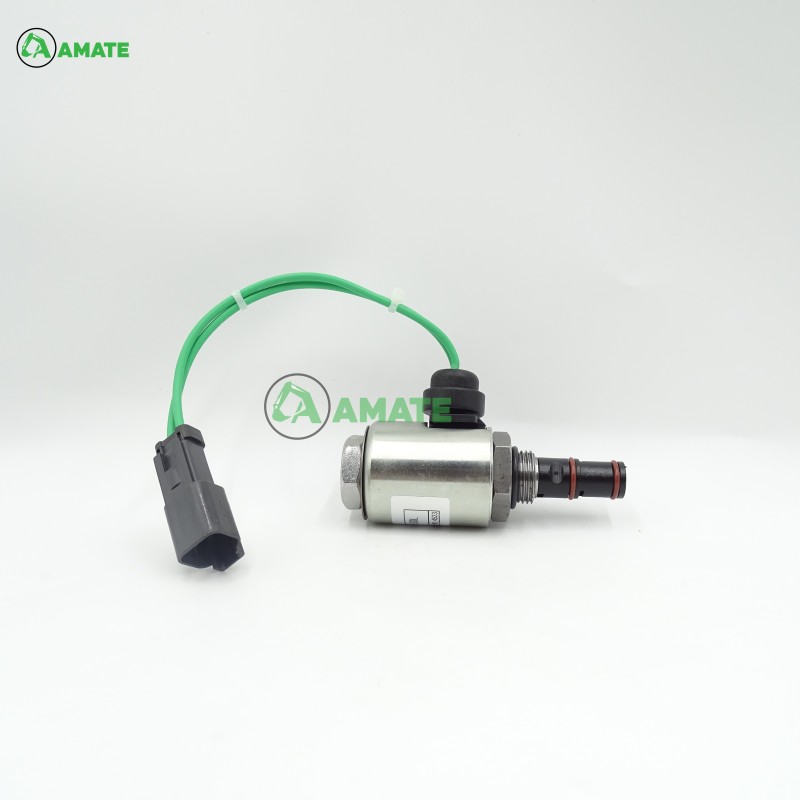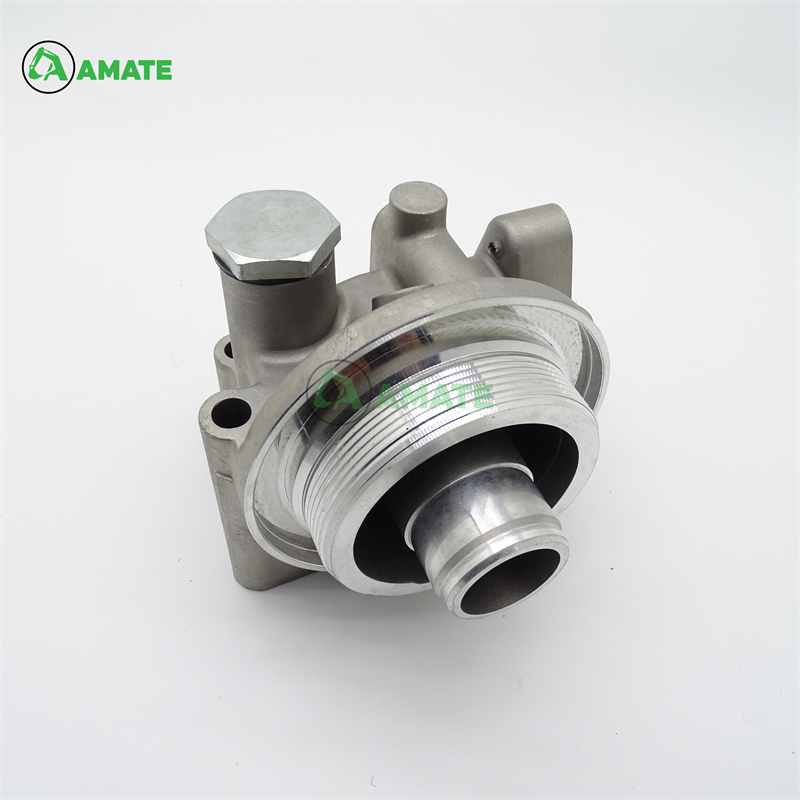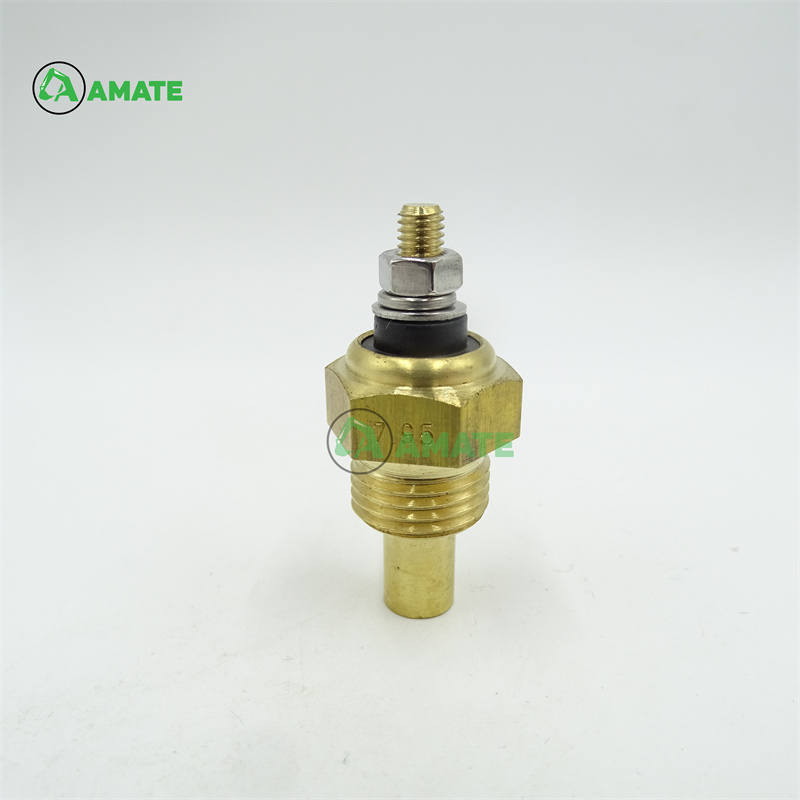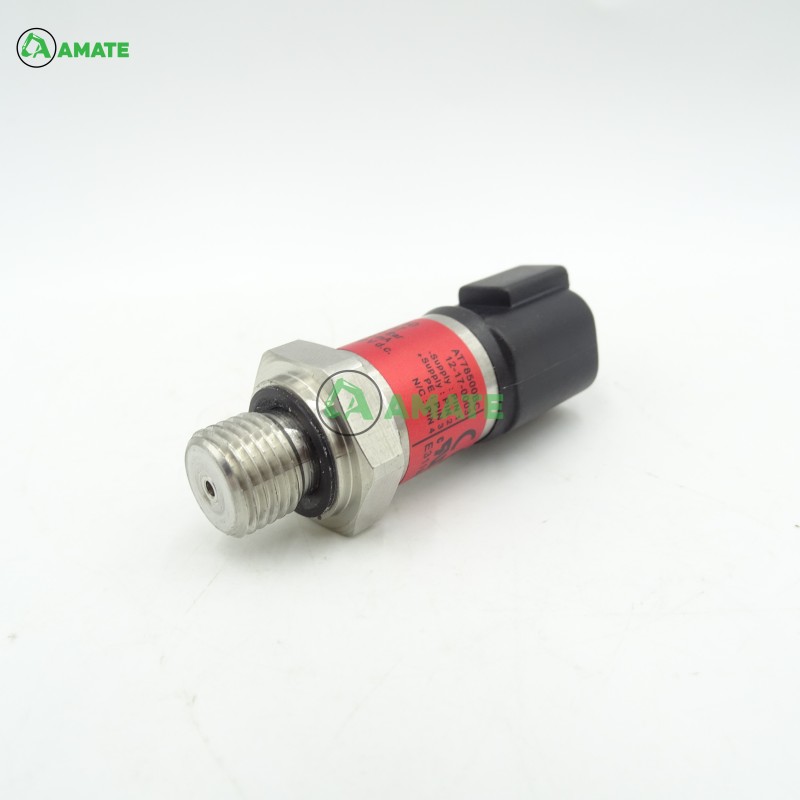Working principle and troubleshooting of excavator solenoid valve
Working principle of solenoid valve:
The solenoid valve RE500844 uses an electromagnet to push the valve core to control the direction of compressed air, thereby controlling the switch direction of the pneumatic actuator.
Its advantages are simple operation and easy remote control.
The electromagnetic reversing valve can realize two-position three-way, two-position five-way, etc. according to different requirements.
The electromagnets used to operate the solenoid valve are divided into two types: AC and DC:
1. The voltage of AC electromagnets is generally 220 volts. Its characteristics are large starting force, short reversing time, and low price. However, when the valve core is stuck or the suction force is insufficient and the iron core cannot be sucked, the electromagnet is easily burned out due to excessive current, so the working reliability is poor, there is impact when it moves, and the life is short.
2. The voltage of DC electromagnets is generally 24 volts. Its advantages are reliable operation, no burning due to valve core stuck, long life, small size, but the starting force is smaller than that of AC electromagnets, and when there is no DC power supply, rectifier equipment is required.
In order to improve the reliability and life of electromagnetic reversing valves, wet electromagnets are increasingly widely used at home and abroad in recent years. There is no need to seal between this type of electromagnet and the slide valve push rod, eliminating the friction at the O-ring. The outside of its electromagnetic coil is directly sealed with engineering plastics without a separate metal shell, which not only ensures insulation but also facilitates heat dissipation, so it works reliably, has little impact and a long life.
Solenoid valve structure:
The solenoid valve includes (coil, magnet, and push rod).
When the coil is connected to the current, it generates magnetism and attracts the magnet, and the magnet will pull the push rod. When the power is turned off, the magnet and the push rod are reset, and the solenoid valve completes the working process. This is the working principle of the solenoid valve.
Solenoid valves are generally used in hydraulic systems to close and open oil circuits.
In fact, RE500844 according to the temperature and pressure of the medium flowing through, such as pressure in the pipeline and no pressure in the self-flowing state. The working principle of the solenoid valve is different.
For example, zero-pressure start is required in the self-flowing state, that is, after power is turned on, the coil sucks up the gate body as a whole.
For the solenoid valve in the pressure state, the coil sucks out a pin inserted in the gate body after being energized, and the gate body is lifted up by the pressure of the fluid itself.
The difference between the two methods is that the solenoid valve in the self-flow state has a larger volume because the coil has to suck up the entire gate body, while the solenoid valve in the pressure state only needs to suck up the pin, so the volume can be made smaller.
Classification of solenoid valves
Tracing the development history of solenoid valves, so far, solenoid valves at home and abroad are divided into three categories in principle (i.e.: direct-acting type, step-by-step pilot type), and are divided into six sub-categories (direct-acting diaphragm structure, step-by-step heavy-plate structure, pilot diaphragm structure, direct-acting piston structure, step-by-step direct-acting piston structure, and pilot piston structure) based on the differences in valve disc structure and materials and the differences in principle.
Direct-acting solenoid valve:
Principle: When energized, the electromagnetic coil generates electromagnetic force to lift the closing member from the valve seat and the valve opens; when the power is off, the electromagnetic force disappears, the spring presses the closing member on the valve seat, and the valve closes.
Features: It can work normally in vacuum, negative pressure and zero pressure, but the diameter is generally not more than 25mm.
Distributed direct-acting solenoid valve:
Principle: It is a principle that combines direct-acting and pilot-operated. When there is no pressure difference between the inlet and outlet, after power is turned on, the electromagnetic force directly lifts the pilot small valve and the main valve closing part upward in turn, and the valve opens. When the inlet and outlet reach the starting pressure difference, after power is turned on, the electromagnetic force pilots the small valve, the pressure in the lower chamber of the main valve rises, and the pressure in the upper chamber drops, thereby using the pressure difference to push the main valve upward; when the power is off, the pilot valve uses the spring force or the medium pressure to push the closing part downward to close the valve.
Features: It can also work * in zero pressure difference or vacuum and high pressure, but the power is large and it must be installed horizontally.
Pilot solenoid valve:
Principle: When powered on, the electromagnetic force opens the pilot hole, the pressure in the upper chamber drops rapidly, and a pressure difference is formed around the closing part, the fluid pressure pushes the closing part upward, and the valve opens; when powered off, the spring force closes the pilot hole, the inlet pressure quickly passes through the bypass hole to form a pressure difference around the closing valve, the fluid pressure pushes the closing part downward, and the valve is closed.
Features: RE500844 The upper limit of the fluid pressure range is relatively high, and it can be installed arbitrarily (customization is required), but the fluid pressure difference conditions must be met.









